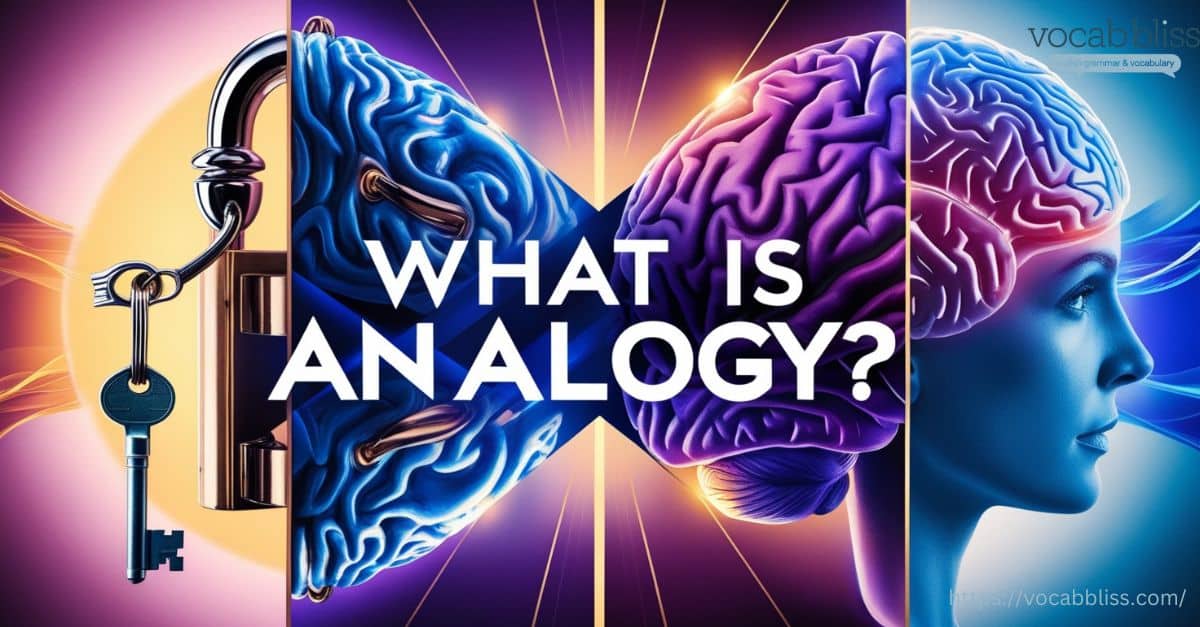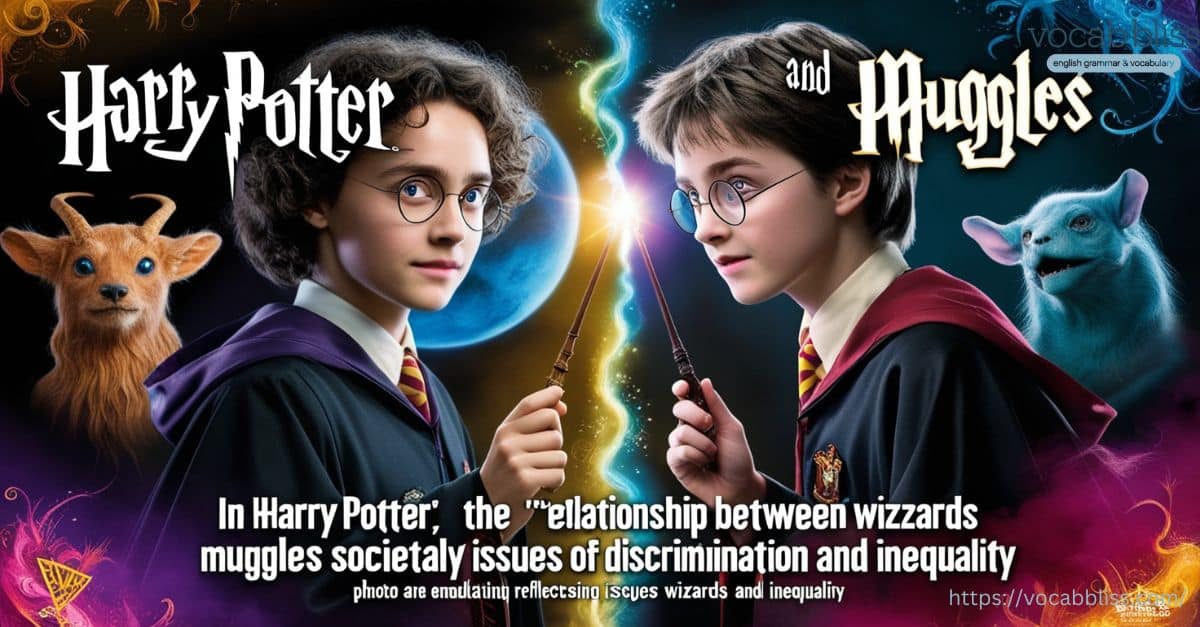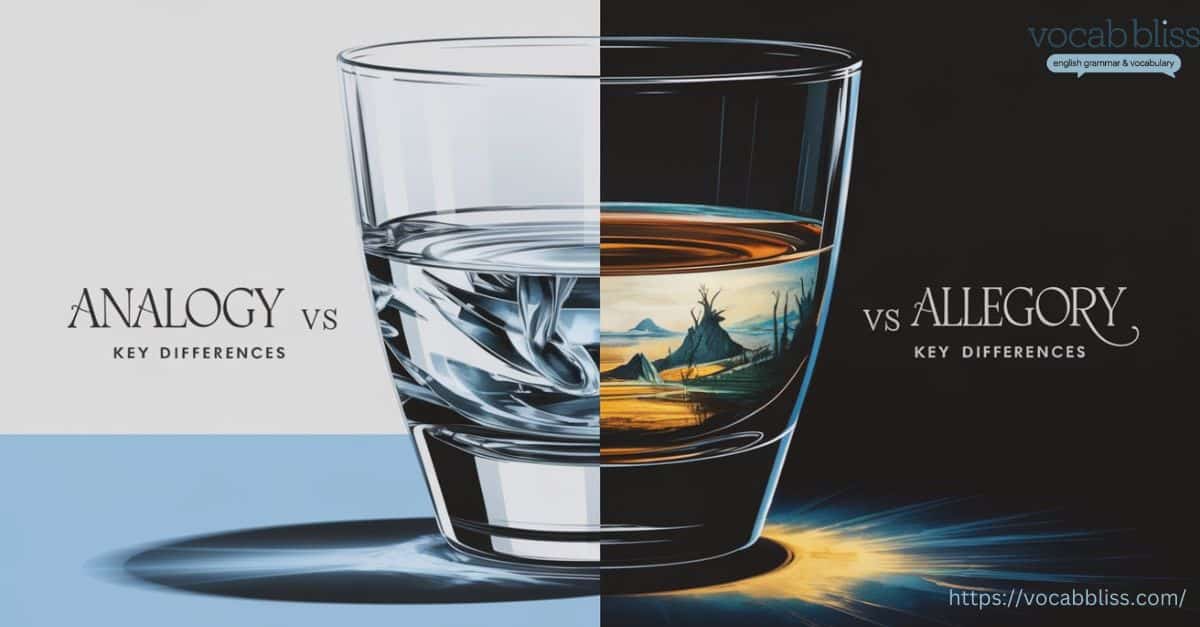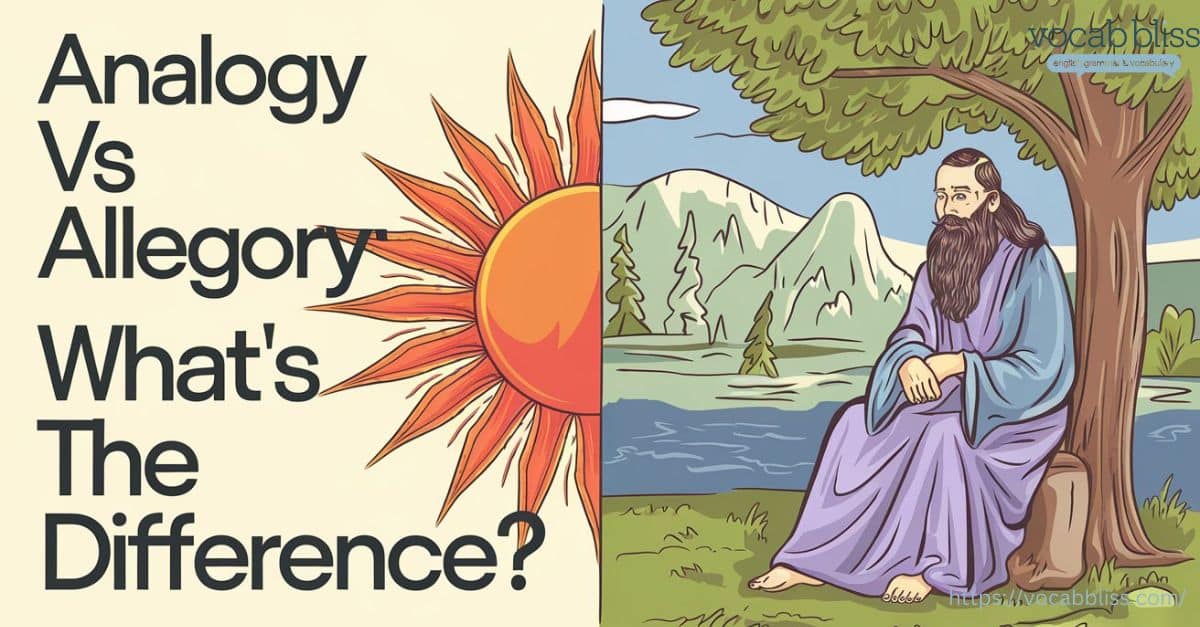When exploring the world of literary devices, it’s easy to encounter terms that sound similar yet carry distinct meanings. Analogy vs allegory often cause confusion, but understanding their differences can elevate your communication and storytelling skills. This guide dives into these terms, providing a thorough comparison of their meanings, origins, and practical applications.
Quick Summary allegory vs analogy
Understanding the difference between analogy and allegory is key to mastering these essential literary devices. An analogy simplifies complex ideas through direct comparisons, making abstract concepts easier to grasp. In contrast, an allegory tells an extended, symbolic story that conveys deeper moral, philosophical, or political meanings. While analogies are short and functional, allegories are elaborate and layered. Both tools, however, enrich communication, from everyday conversations to profound literary works. By recognizing when and how to use these devices, you can add clarity, depth, and creativity to your writing and storytelling.
Continue reading: Constant vs Consistent: A Deep Dive into Their Meanings
Understanding Analogy
What is an Analogy?

An analogy is a comparison between two things, typically made to explain or clarify a concept by highlighting their similarities. Unlike metaphors or similes, which focus on artistic expression, analogies are designed to enhance understanding.
For example:
- “Life is like a box of chocolates—you never know what you’re going to get.” This analogy compares life’s unpredictability to the random selection of chocolates in a box.
Purpose of Analogies:
- To break down complex ideas into simpler, relatable terms.
- To engage audiences by connecting abstract or unfamiliar concepts with familiar experiences.
Analogies are used in education, communication, and creative writing to convey ideas effectively. They help bridge the gap between what someone knows and what they need to understand.
Origins and Evolution of Analogy
The concept of analogy has deep historical roots:
- Ancient Greece: Greek philosophers like Aristotle often used analogies to illustrate philosophical and scientific concepts. For instance, Aristotle compared the state to a household, emphasizing harmony and order.
- Middle Ages: Analogies became central in theology and philosophy, helping scholars explain divine or metaphysical ideas in tangible ways.
- Modern Times: Today, analogies are widely used in everything from science (e.g., “DNA is the blueprint of life”) to marketing (e.g., “Our app works like a personal assistant”).
Analogies remain universally relevant because they cater to the human brain’s preference for patterns and connections. They simplify learning and foster better communication.
Types of Analogies
Analogies can take various forms, each serving a distinct purpose. Here are the most common types:
1. Literal Analogies:
- Compare two things that are alike in a real, tangible way.
- Example: “A heart is like a pump; it moves blood through the body just as a pump moves water through pipes.”
2. Figurative Analogies:
- Compare things that are not literally similar but share conceptual traits.
- Example: “Time is a thief—it steals moments we can never get back.”
3. Analogies in Logic and Reasoning:
- Often used in tests like the SAT, analogies in logic require finding relationships between word pairs.
- Example: “Bird is to feather as fish is to scale.”
4. Analogies in Storytelling:
- Enhance narratives by providing vivid mental images.
- Example: In Harry Potter, the relationship between wizards and muggles mirrors societal issues of discrimination and inequality.

Understanding Allegory
What is an Allegory?
An allegory is a storytelling technique in which characters, events, and settings symbolically represent abstract ideas, moral principles, or political concepts. Unlike an analogy, which focuses on drawing a direct comparison, an allegory uses an entire narrative to convey deeper meanings.
For instance, George Orwell’s Animal Farm serves as a political allegory, using farm animals to symbolize the rise of communism and the corruption of power. Similarly, Plato’s Allegory of the Cave explores the nature of reality and enlightenment through a metaphorical tale.
Allegories often have layered meanings, blending literal storytelling with figurative symbolism, making them a powerful medium for conveying complex ideas in an engaging and thought-provoking manner.
Origins and Significance of Allegory
The roots of allegory can be traced back to ancient civilizations, where myths and religious texts used symbolic narratives to explain natural phenomena, teach moral lessons, or express philosophical ideas.
- Ancient Myths: Early allegories can be seen in Greek mythology, such as the tale of Icarus, symbolizing human ambition and its potential consequences.
- Religious Texts: Many biblical stories, like the parable of the Prodigal Son, are allegories teaching moral and spiritual lessons.
- Philosophy: Plato’s Allegory of the Cave stands as a cornerstone in Western philosophical thought, illustrating the journey from ignorance to enlightenment.
Allegories remain relevant in modern times because they allow writers to address controversial or abstract topics—such as politics, ethics, and societal norms—indirectly, encouraging readers to interpret and reflect.
Types of Allegories
Allegories can be categorized into classical and modern, each serving distinct purposes and audiences:
- Classical Allegories:
These narratives often draw from religious or philosophical themes, aiming to educate or inspire.- The Pilgrim’s Progress by John Bunyan: A Christian allegory about the journey of faith.
- Dante’s Divine Comedy: A symbolic exploration of the afterlife, morality, and redemption.
- Modern Allegories:
Contemporary allegories often tackle social, political, or existential themes, resonating with present-day issues.- The Hunger Games by Suzanne Collins: A critique of social inequality, media manipulation, and authoritarianism.
- Life of Pi by Yann Martel: A philosophical allegory about faith, survival, and human resilience.
Analogy vs Allegory: Key Differences

To understand the difference between allegory and analogy, it helps to compare their core aspects. While both are powerful literary devices, their purposes, structures, and use cases differ significantly. Below is a comparison table to break down these differences clearly:
| Aspect | Analogy | Allegory |
|---|---|---|
| Meaning | a comparison between two things, typically for the purpose of explanation or clarification. Example: “Time is money.” | A symbolic narrative where characters, events, or settings represent abstract ideas or moral principles. Example: Animal Farm. |
| Purpose | To simplify a complex idea by comparing it to something familiar. | To convey layered meanings, often addressing moral, philosophical, or political themes. |
| Length | Brief and to the point, often a single sentence or paragraph. | Extended narrative, often the length of a story, poem, or entire novel. |
| Use Cases | Used in essays, speeches, and day-to-day explanations to clarify abstract concepts. | Common in literature, film, and art to explore deeper meanings or critique societal issues. |
| Structure | Focused on a direct comparison, often literal or figurative. | Builds an entire story or narrative around symbolic representation. |
| Reader Interpretation | Requires less interpretation as the comparison is straightforward. | Invites the reader to analyze and interpret the hidden meanings behind the symbolism. |
| Example | “The brain is like a computer, processing information and storing data.” | The Lion, the Witch, and the Wardrobe by C.S. Lewis: An allegory for Christian theology. |
Deeper Insights
How Analogies Simplify Concepts
Analogies act like a mental bridge, making unfamiliar ideas more relatable. For instance:
- “Explaining the economy is like describing a flowing river—resources are distributed like water currents.”
This analogy clarifies a complex topic with an easily understood visual comparison.
How Allegories Build Symbolic Worlds
In contrast, allegories immerse readers in a symbolic journey where everything—characters, events, and even settings—has a deeper meaning. For example:
- George Orwell’s Animal Farm critiques political corruption, using a farm as a metaphor for a totalitarian regime.
Practical Applications in Writing and Communication
Using Analogy Effectively allegory vs analogy
- Clarify Complex Concepts: Analogies simplify challenging ideas. For instance, explaining the internet as a “highway of information” is a common linguistic comparison.
- Engage Your Audience: A well-placed analogy can captivate readers or listeners, especially in speeches or persuasive writing.
Tips for Crafting Powerful Analogies:
- Focus on relatable scenarios.
- Avoid overly abstract comparisons.
- Test the analogy for clarity and relevance.
Using Allegory Effectively
- Deliver Layered Messages: Allegories allow writers to embed deeper meanings into their work, engaging readers in thoughtful interpretation.
- Make a Moral Point: Allegories are often used to critique or teach, as in the case of political allegories like 1984.
Best Practices for Writing Allegories:
- Develop symbolic characters and settings.
- Balance complexity with readability.
- Ensure the underlying message aligns with your narrative.
Common Pitfalls to Avoid allegory vs analogy
Misusing Analogies
- Oversimplification: An analogy that’s too basic can mislead instead of clarify.
- Forced Comparisons: Ensure the two items being compared share genuine similarities.
Misusing Allegories
- Overcomplication: Overly complex allegories can alienate readers.
- Ambiguity: Make sure your audience understands the intended symbolism.
Examples of Analogy vs Allegory in Action
Famous Analogies
- Martin Luther King Jr.: “We will not be satisfied until justice rolls down like waters and righteousness like a mighty stream.”
- Advertising: “Red Bull gives you wings” is a figurative analogy connecting the drink to energy.
Renowned Allegories
- Allegory of the Cave: Plato uses this allegory to explore human perception and enlightenment.
- The Chronicles of Narnia: C.S. Lewis weaves Christian allegory into a fantastical narrative.
FAQs Related allegory vs analogy
What’s the difference between an analogy and an allegory?
An analogy is a brief comparison used for clarification, while an allegory is an extended narrative with symbolic meaning.
What’s an example of an allegory?
George Orwell’s Animal Farm is a notable allegory critiquing political ideologies.
What’s an example of an analogy?
“The brain is like a computer” effectively explains cognitive functions.
Are parables considered allegories or analogies?
Parables are a form of allegory, often delivering moral lessons through symbolic storytelling.
How do allegory vs metaphor vs analogy differ?
An analogy explains through comparison, a metaphor substitutes one thing for another, and an allegory tells a symbolic story.
Is a proverb an analogy?
No, a proverb conveys wisdom or a truth, not a comparison like an analogy.
Analogies, Allegories, and Beyond
Mastering the art of analogies and allegories can transform your communication skills. Analogies simplify the complex, while allegories enrich narratives with depth and symbolism.
By understanding allegory vs analogy and their differences and applications, you can wield these tools to clarify, persuade, and inspire your audience.
A Final Takeaway: Bridging Ideas Through analogy vs allegory
Both analogies vs allegories are powerful literary devices that serve to convey deeper understanding, but they do so in distinct ways. While analogies clarify by drawing comparisons between two concepts, allegories weave symbolic narratives to express layered meanings, often carrying moral or philosophical messages.

